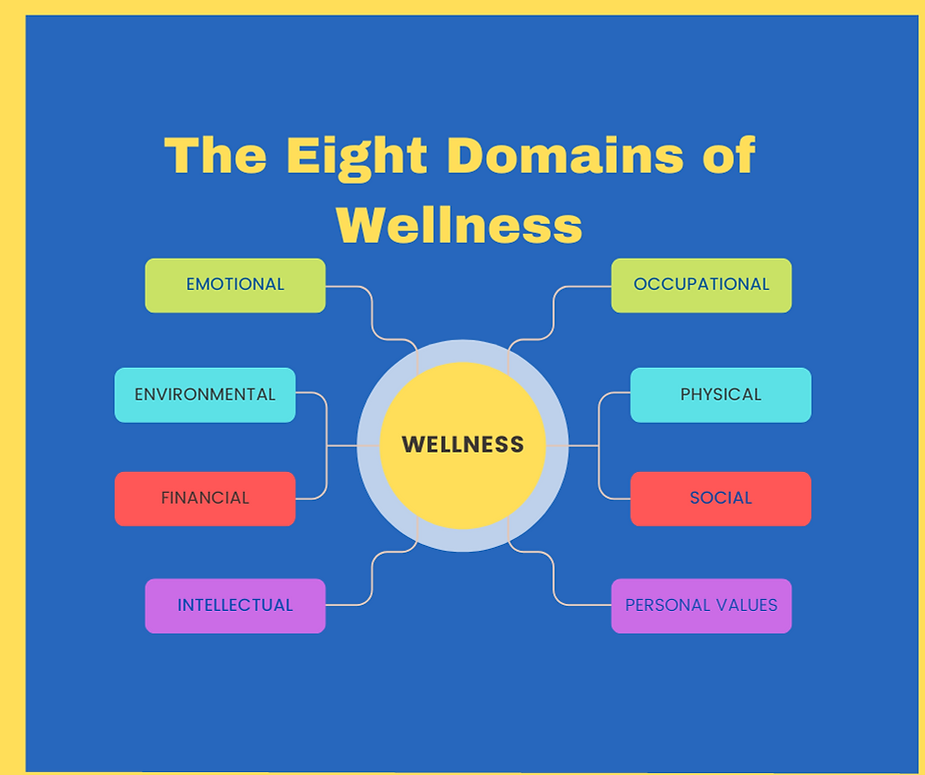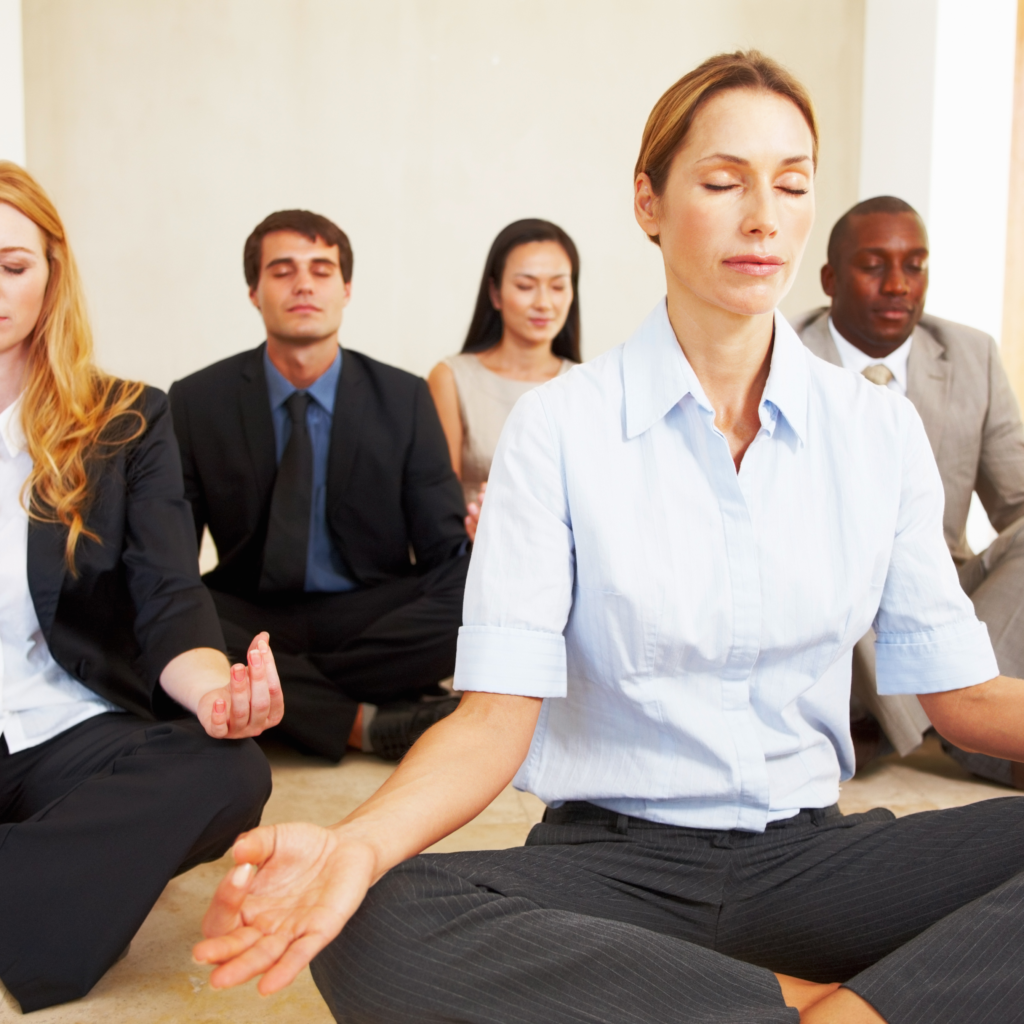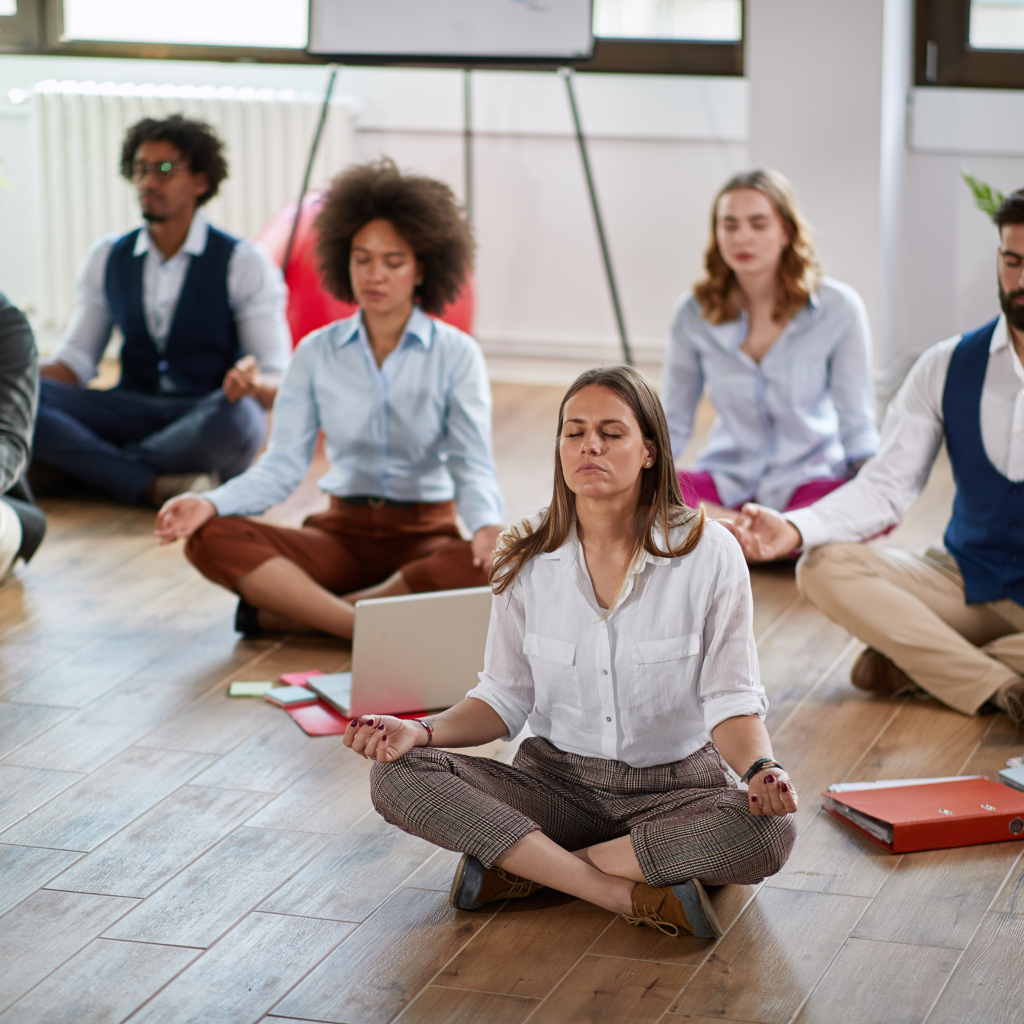
Ultimate Guide for Workplace Health: Unleashing the Potential of Your Corporate Wellness Program
Ready for a wellness journey that’s more than just buzzwords? Welcome to Origins Unity, where we’re flipping the script on well-being. It’s not about the usual drill; it’s about diving into everything that makes life worthwhile and manageable. We need models and frameworks that are more than theory and something we can bet our life on. How do we organize all of this in one place and ensure it makes sense for each individual person and the entire organization? By having a trusted wellness consultant take you through the Eight Domains of Wellness outlined in the Ultimate Guide for Workplace Wellness. This means a whole-person, multi-dimensional systems-approach to achieving good health and lasting wellbeing that will continually evolve.
By outlining health goals, sequencing the right wellness activities, and promoting company benefits, we will transform the workplace culture and ensure a healthy workforce. Our Corporate Wellness Program isn’t your typical health kick; it’s a lifestyle overhaul and the creation of a wellness culture. The available downloadable Ultimate Guide for Workplace Health isn’t just a booklet; it’s your ticket to a more meaningful, balanced, and empowered life for you and your community.
Health and Wellness Program Best Practices
Implementing a successful health and wellness program involves a strategic approach. Begin by conducting a comprehensive assessment of employee health needs, ensuring their active involvement in the planning process to align with preferences. Establish clear, measurable goals and communicate them effectively through a well-rounded strategy. Offer a holistic range of initiatives covering physical, mental, and nutritional well-being, encouraging participation with incentives and recognition. Prioritize accessibility, making sure that wellness activities cater to all employees.
Provide educational resources and foster partnerships with local resources. Regularly evaluate the program’s effectiveness and secure leadership support for a positive culture. Design the program with long-term sustainability in mind and consider the eight domains of wellness: personal values, physical, emotional, social, environmental, intellectual, occupational, financial. Embrace Origins Unity, a personalized wellness journey tailored to individual needs, transcending cookie-cutter approaches for a sustainable and meaningful impact.
Let’s redefine wellness together, making it not just a plan but a personal-legacy and sustainable reality that aligns seamlessly with your team’s rhythm and ultimately creates culture.
It is important to consider all of this while operating through a formal set of industry best practices and considerations:
- Assessment and Analysis
- Employee Involvement and Input
- Clear Goals and Objectives
- Comprehensive Communication
- Holistic Approac
- Incentives and Recognition
- Accessibility and Flexibility
- Educational Components
- Partnerships and Resources
- Regular Evaluation
- Leadership Support
- Long-Term Sustainability

What is Wellness and a Workplace Wellness Program:
Alright, let’s kick things off with a chat. We want to get to know you and the people you’re hard at work leading forward. It all begins by us listening to your goals and current state. We’re not going to be throwing jargon at you; it’s just a conversation. We then provide the right tools, assess your well-being, and set personal and group or organizational-wide objectives.
Transforming the work environment for the better means encouraging healthy lifestyle choices in all ways possible, providing access to wellness benefits, and fostering a supportive work environment all play pivotal roles. Recognizing the interconnectedness of employee well-being and overall organizational success, investing in health and wellness initiatives becomes a strategic imperative for cultivating a motivated, engaged, and resilient workforce. This requires a wellness consultant that isn’t a robot; instead, they are a guide to making workplace wellness accelerate learning, growth, and fulfillment.
The Workplace Wellness Lifecycle and Corporate Wellness Solution:
The Ultimate Guide for Workplace Health starts with the Worksite Wellness Lifecycle Solution and encompasses a strategic journey that begins with securing executive sponsorship, creating a dedicated team or committee, and conducting thorough research to identify specific organizational needs. Subsequently, the process involves crafting clear goals and objectives aligned with the identified needs, fostering a supportive workplace environment, and developing a robust action plan for effective implementation.
The final stage is the critical evaluation of outcomes, ensuring a dynamic and responsive approach to employee wellness. All of this should be performed through a collaboration between a credentialed wellness consultant and your personnel. By navigating through these stages, organizations can establish a culture that prioritizes health and wellbeing, resulting in a resilient and thriving workforce.

What is Wellness and a Workplace Wellness Program:
Wellness means functioning optimally in the environment you’re in. Wellness is a dynamic and personally defined collection of lifestyle practices and values aimed at fostering optimal health and fulfillment. It goes beyond a static concept, actively guiding individuals toward realizing their full potential. This journey is facilitated through a dual commitment to personal wellness and the support of surrounding communities.
Wellness signifies balance, effort and managing life in a conscious and sustainable way that considers the entire person and all related facets of one’s livelihood. It isn’t about diet trends and yoga poses; it’s about seizing the opportunities at hand and working towards mastery over our life.
A wellness program is strategically designed to foster a supportive workplace culture, promoting healthy behaviors and improving employees’ quality of life. By offering a range of resources, activities, and support mechanisms, a Workplace Wellness Program aims to create an environment that prioritizes and nurtures the holistic health of its workforce. The ultimate goal is to cultivate a more engaged, satisfied, and productive workplace.
We have the wisdom from the National Wellness Institute and the research and best practices from countless other organizations like: WHO, Global Wellness Institute, CDC, APA, Pubmed, CORE, ScienceOpen, and more. There’s no one-stop-shop; it’s an ongoing adventure.
The Knowledge Hub for an Employee Wellness Program:
Now, about that goldmine of wellness wisdom—we call it the Knowledge Hub. A centralized wellness repository will house all materials, ensuring easy access for employees at any time. This transforms our workplace into a dynamic learning organization, fostering continual evolution, growth, and improvement. The future belongs to companies that embrace a learning-centric approach—those capable of harnessing the collective experiences, satisfaction, knowledge, and connections embedded within the organization.
Enriched learning and growth opportunities not only empower individuals but also cultivate a collaborative community spirit, significantly enhancing everyone’s capacity to succeed and even more so within a shared workspace. It’s not just a boring library; it’s where the magic and transformation happens. We’re turning your workplace into a growth-mindset organization of highest-resourcefulness. Are you ready to evolve, grow, and enable your team or enterprise to become the best version of itself? This is the answer.

Why a Workplace Wellness Initiative May Fail:
A workplace wellness initiative may face challenges such as lack of employee engagement, poor communication, insufficient leadership support, unclear goals, and a one-size-fits-all approach. Ineffective program design, resistance to change, and inadequate resources further contribute to potential shortcomings. Many wellness programs falter because they miss the mark and lack personalization. A one-size-fits-all approach often leads to failure, emphasizing the importance of getting down to the nitty-gritty. It’s crucial to use the right framework, and this is where a wellness consultant becomes invaluable. They support internal resources in creating a tailored program that meets individual needs, ensuring personalization and long-term success for all of the talent within your eco-system.
Whole-Person Approach to Encourage Employee Wellbeing:
Promoting employee wellbeing isn’t confined to step counts, waste pickups, and posting pictures of healthy meals; it’s a holistic lifestyle that’s centered around what brings you joy, meaning, and raises your quality of life. Our commitment goes beyond rhetoric; we exemplify the Whole-Person Approach, a meaningful understanding of the comprehensive picture of life and all that it has to offer. We have the lived experience as well as the theoretical basis and scientific foundation.
Similar to a puzzle, individual, family, organizational, community, and social systems seamlessly converge when we use the 8 domains framework. We’re dedicated to unraveling what motivates each of us, ensuring sustainability. The way to make this happen is with our 8 Domains Quick One-Sheet Action Plan—a no-nonsense guide to conquering wellness goals. It’s all about balance, relevance, and fostering intentional living.
Action Plan:

Assessment for Successful Wellness Program Outcomes:
Let’s get down to the nitty-gritty—assessment time. It’s about understanding your well-being needs, spotting potential roadblocks, and tailoring wellness plans that actually make a difference. It’s not a one-time thing; it’s an ongoing journey of continuous evaluation and opportunity.
The Basic Overview of Company-Wide Assessment
Surveys, health screenings, and questionnaires solicit insights into health behaviors across various domains, while Health Risk Assessments identify specific health risks. Biometric screenings measure physical indicators, and focus groups or interviews offer qualitative feedback. Participation metrics track engagement, and absenteeism data correlates with wellness involvement. Organizational culture assessments evaluate the integration of well-being into the workplace ethos. Ongoing employee feedback channels and benchmarking provide additional perspectives. This multifaceted approach allows organizations to tailor interventions, track progress, and continuously refine their wellness initiatives.
Within the framework of the eight domains, individual assessments for each wellness category empower participants to effectively navigate their well-being journey, granting them control over tracking progress and the option to share it within a group format or coaching session.
The overall assessment process is not only a diagnostic tool but a proactive measure to enhance overall program effectiveness and promote a culture of continuous improvement.
What Are the Various Dimensions of Ultimate Guide for Workplace Health?
Occupational Wellness:
Your job satisfaction matters, and we’re here to make sure you love what you do. It’s not just about a paycheck; it’s about finding purpose and growth in your work.
Intellectual Wellness:
Let’s keep those brain cells buzzing. Learning and growing aren’t just for school; it’s a lifelong adventure. Get ready to challenge your mind and amp up your curiosity.
Emotional Intelligence:
Feel the feels, folks. Emotional well-being is more than just a buzzword. It’s about recognizing and owning those emotions while keeping your cool.
Social Wellness:
Work is a team sport, and we’re all about fostering those connections. Say goodbye to cubicle isolation; it’s time to build relationships that matter.
Personal Values:
Ever wondered what really matters to you? It’s not just about work; it’s about aligning your values with your life. Get ready to discover your purpose and satisfaction.
Physical Health:
Your body is a powerhouse, and we’re here to keep it running like a well-oiled machine. From workouts to nutrition tips, we’ve got your back on the physical wellness front.
Financial Literacy and Resilience:
Let’s talk money matters. It’s not just about earning; it’s about managing and planning for the future. Get ready to take charge of your financial wellness.
Environmental and Eco-System Organization:
We’re not just about personal wellness; it’s about the big picture too. Creating a sustainable work environment is our jam. It’s about being eco-conscious in the workplace.
Domain Review:
It’s time to play favorites. How do you rate each wellness aspect in your life? This isn’t just a checklist; it’s about digging deep and figuring out what truly matters to you.
Wellness Inventory:
Ready for a deep dive? Our inventory isn’t just about numbers; it’s about understanding your work practices and crafting a wellness strategy that fits like a glove.

Employee Engagement:
Fostering employee engagement is a cornerstone of a vibrant workplace. Make your people feel valued and let them know you want to hear from them on a regular basis. Implement strategies that create a sense of purpose, connection, and fulfillment. Encourage open communication channels, providing regular feedback and recognition for achievements. Facilitate professional development opportunities and skill-building initiatives to empower employees in their roles. Promote a positive work culture through team-building activities and inclusive practices.
The best corporate wellness program will increase employee experience while working making folks feel valued and heard. This will improve employee health and worksite wellness. This is a continuous journey, requiring genuine efforts to understand and meet the diverse needs of your team, ultimately contributing to a thriving and motivated workforce.
Employee Wellness Program Ideas
Revitalize your workplace with a dynamic employee wellness initiative. Implement interactive virtual wellness workshops, foster a culture of gratitude with daily appreciation posts, and launch “Random Acts of Kindness” challenges to enhance team morale. Introduce “Wellness Wednesdays” with themed activities, from guided meditation sessions to light-hearted or educational webinars and team-building fun, catering to diverse well-being preferences.
Cultivate a supportive environment by organizing virtual book clubs centered around well-being literature and hosting virtual “Lunch and Learn” sessions on topics like work-life balance and personal development. Encourage employees to share their well-being journeys through a designated central place of communication and collaboration, fostering a sense of connection and inspiration. By embracing these varied approaches, you’ll create a workplace where well-being is woven into the fabric of daily work life, fostering a thriving and resilient team.
Corporate Wellness Program Evaluation
Evaluating the effectiveness of a corporate wellness program is crucial for ongoing improvement and ensuring it aligns with organizational goals. Employ a comprehensive approach by analyzing both quantitative and qualitative data. Assess participation rates, health metrics, and employee feedback to gauge the program’s impact.
Conduct surveys or focus groups to gather insights into the participant experience. Compare collected data against baseline measures to identify trends and areas of success. Regularly analyze the outcomes to inform adjustments, emphasizing successful elements and addressing any challenges. This iterative evaluation process ensures a responsive and adaptive approach, maximizing the positive impact of the corporate wellness initiative on employee well-being and overall organizational health.

A Message From Origin’s Unity:
As we wrap up this short exploration of what wellness means, and how to create a corporate program, let’s take a moment to reflect on what’s most essential for us. Everyone’s wellness looks different, and it will look different day-to-day too. All things considered, where do we go from here? It’s time to reference the Ultimate Guide for Workplace Health and Corporate Wellness Programs.
This blog isn’t the full guide, so make sure to connect with us and we’ll send you the complete guide.
The comprehensive guide isn’t just a manual; it’s a commitment to a workplace where well-being is foundational. From aligning with organizational goals to managing mental and occupational health, creating a dynamic team, supportive environment and a culture of wellness at work, we’re in this together. Remember, it’s not just about ticking off boxes and conforming to generic requirements—it’s about letting each individual define wellness for themself and keeping the spark within us alive.
Thanks for being part of this journey. Let’s make Origins Unity a hub of well-being and success.
With gratitude, Origins Unity LLC.

































